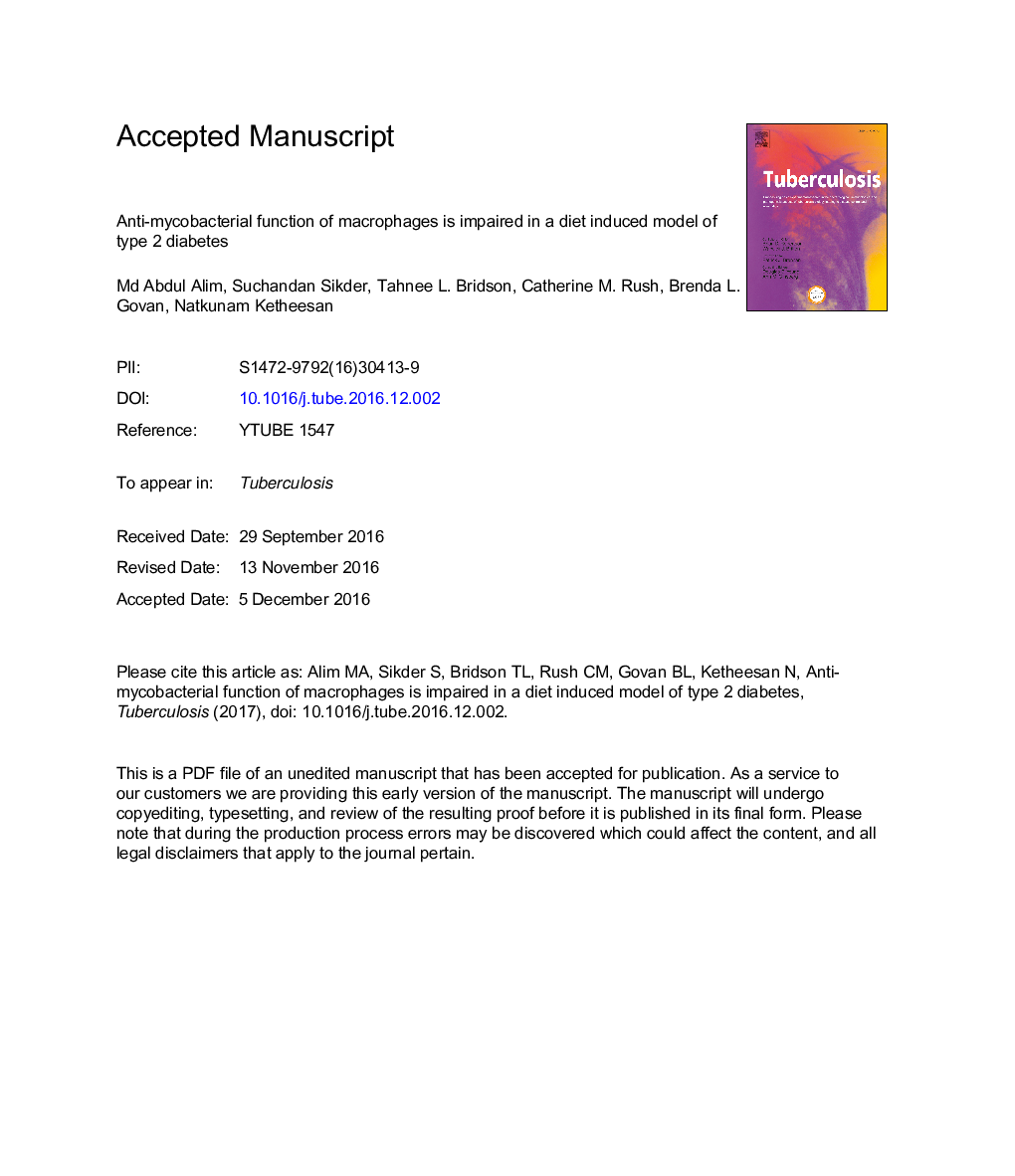| Article ID | Journal | Published Year | Pages | File Type |
|---|---|---|---|---|
| 5536286 | Tuberculosis | 2017 | 20 Pages |
Abstract
Type 2 diabetes (T2D) is one of the major risk factors for tuberculosis (TB). In this study, a diet induced murine model of T2D (DIMT2D) was developed and characterized in the context of metabolic, biochemical and histopathological features following diet intervention. Mycobacterial susceptibility was investigated using Mycobacterium fortuitum as a surrogate. Phagocytic capability of alveolar macrophages and resident peritoneal macrophages were determined by in vitro assays using mycolic acid coated beads and M. fortuitum. Results demonstrated that bacillary loads were significantly higher in liver, spleen, and lungs of diabetic mice compared to controls. Higher inflammatory lesions and impaired cytokine kinetics (TNF-α, MCP-1, IL-12, IFN-γ) were also observed in diabetic mice. Macrophages isolated from diabetic mice had lower uptake of mycolic acid coated beads, reduced bacterial internalization and killing and altered cytokine responses (TNF-α, IL-6, MCP-1). This model will be useful to further investigate different facets of host-pathogen interactions in TB-T2D.
Related Topics
Life Sciences
Immunology and Microbiology
Applied Microbiology and Biotechnology
Authors
Md Abdul Alim, Suchandan Sikder, Tahnee L. Bridson, Catherine M. Rush, Brenda L. Govan, Natkunam Ketheesan,
